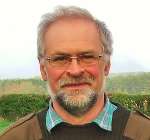How we miss seeing our friends. The current pandemic is a challenge for all musicians, the Scottish Ensemble no exception, their mysterious online Sonic Meditation project, part of a Digital Summer Season having more success than the planned outdoor Vivaldi performances in Glasgow, scrapped as social regulations changed overnight. What a delight then to have the Ensemble back in full concert mode in a filmed performance at the Cottier Theatre in Glasgow, the atmospheric converted church a perfect setting for a thoughtful programme of Songs for Life. The opener, the last movement of Walton’s Sonata for String Orchestra shook us awake from lockdown torpor with its fizzing energy and disturbing edginess telling us emphatically that the Scottish Ensemble is back in business.
Getting hold of an international opera singer normally means consulting diaries two years hence, but we are not in normal times so the Scottish Ensemble seized the opportunity to secure Karen Cargill. A pre-show talk and interval feature with Cargill and Jonathan Morton lifted the lid on how they are dealing with the current situation. Cargill explained that with everyone based at home, the focus is on love and life: the love of childhood memories and lullabies, the family we live with, the family we can’t see now and ones who are lost. It has been difficult for both, but Morton, finding it harder as restrictions continue, is determined to focus on hopeful things.
Cargill’s warm mezzo was perfect for two songs from Mahler’s sunny Des Knaben Wunderhorn, Morton’s players almost doing an on-the-spot slow waltz. Cargill’s long languorous phrasing in Wer hat dies Liedlein erdacht was gorgeous, her storytelling in Rheinlegendchen mesmerising. Just as we were getting cosy at our firesides, the warm lighting snapped to frosty blue with the sombre Funeral March from Britten's Variations on a Theme of Frank Bridge. The strings played with a passion tinged with hope but underpinned by a solemn relentless tread from the cellos and bass, the players appearing almost ghostly in the dark church, Cargill silently watching. The shadow of Alison Lawrance’s cello on the stone floor as she accompanied Dido’s Lament from Dido and Aeneas was one of the many inspiring touches from filmmaker Miranda Stern. Cargill gave an immense performance, her voice opening up gloriously but a soft huskiness giving a poignant edge as the camera panned to birds in the sky.
George Walker’s Lyric for Strings continued the solemn theme, the players slowly building from a meditative tapestry to a powerful crescendo of anguish before subsiding to a serene finish. György Kurtág Virág az ember (Flowers we are) from Mijakónak was an exchange of wispy fragments between violin, viola and cello, the sparsity only emphasising the deepening silence.
Colin Matthews’ arrangement of two songs from Britten’s A Charm of Lullabies and a pale pink lighting change introduced the childhood theme, Cargill beginning The Nurse’s Song with a serene calm which grew in intensity, then relishing the poetry of Burns in The Highland Balou as the strings gently swayed, all far too entertaining to nod off. Chick Corea’s Children’s Song no. 7 had the cellos almost dancing, and rounding off the section, the spirited Presto from Beethoven’s String Quartet no. 13 in B flat major, this arrangement adding energy to this nursery romp with the extra heft of a double bass and additional players.
A delightful Janáček piece The Barn Owl Hasn’t Flown Away was a showcase for Jane Atkin’s ethereal viola against a simple tune with rich harmonics. Cargill returned with two Dvořák love songs, capturing the intensity of young love completely. Caroline Shaw’s restless Entr’acte explored transition, jumping from fragments through thrillingly syncopated pizzicato, and whooshing bows over the strings. The players got a physical workout as the music rolled up and across their instruments, but the piece never really settled, a cello’s softly broken chords providing a calm ending.
The final Song for Life was a haunting version of Auld Lang Syne, Cargill and a lone cello drone, then the whole Ensemble singing as they slowly added their instruments, everyone facing directly into sunset orange lighting. Auld Lang Syne, sung at the end of weddings and dances, events impossible since March, is giving your trusty neighbours your hands in a circle of fellowship. How we miss our friends, but it is wonderful to have the Scottish Ensemble players back – we can’t be with them yet, but this event was one of the best streams with perfect sound, atmospheric lighting and thoughtful filming, so vivid we were almost there in the room.
This performance was reviewed from the Scottish Ensemble's video stream


